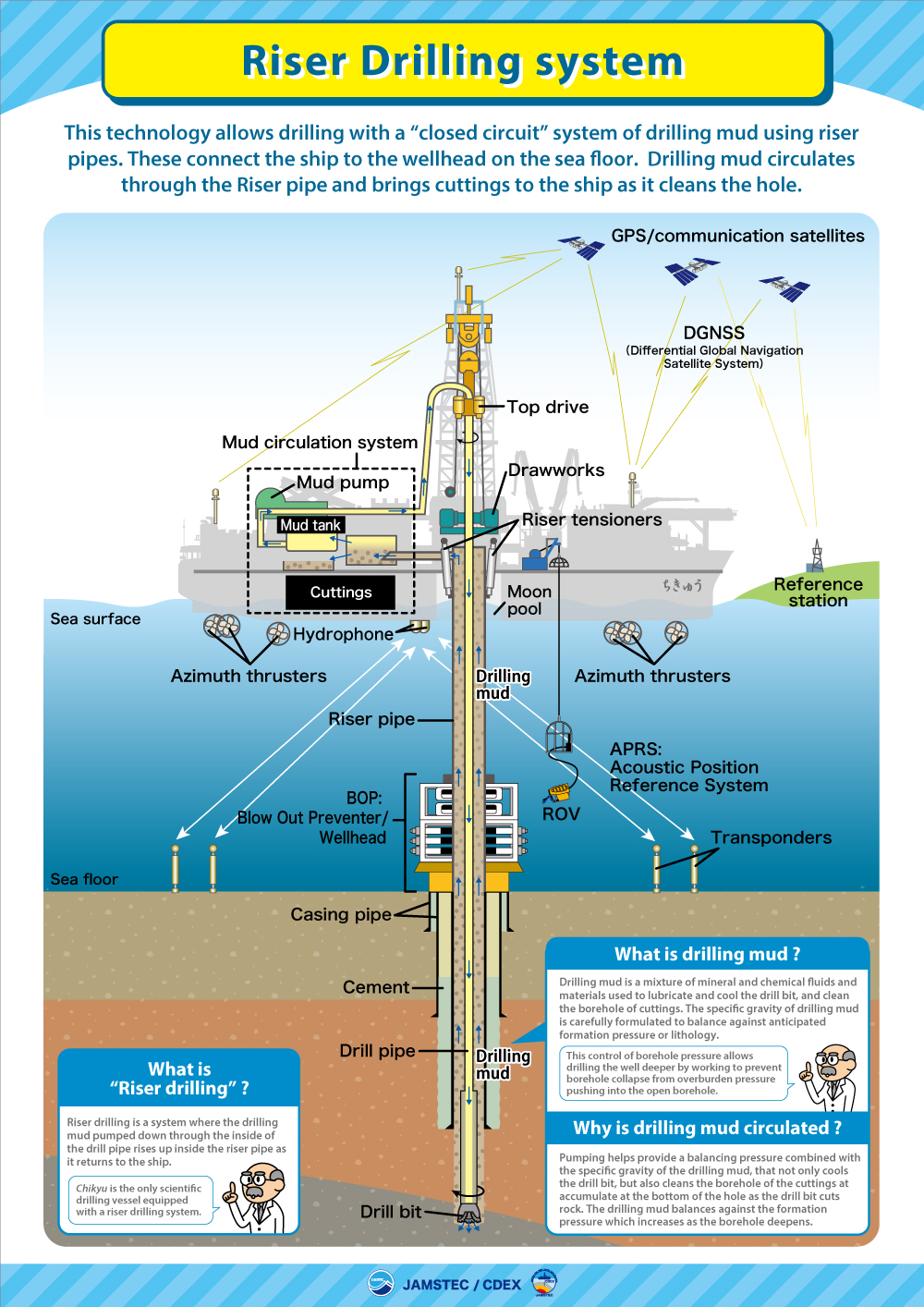Drilling
Riser pipe is a large diameter “tube” through which the drilling pipe runs. Drilling mud flows back inside this pipe to Chikyu, where it is cleaned of cuttings, filtered, and chemical mix and density are modified before being re-used.
Drilling mud, carefully adjusted to the drilling site geology, removes cuttings from the borehole, cools the drill bit, and helps suppress formation pressure. This allows Riser drilling to reach deeper depths than when compared with “Riserless drilling” which has no ability to control formation pressure.
Cuttings are recovered on Chikyu along with the drilling mud. The cuttings are used for geological research and also to evaluate and estimate borehole conditions.
Riserless Drilling
“Riserless drilling” does not use Riser pipe. Instead, in “Riserless drilling”, the drillpipe runs into the open water to the sea floor and into the borehole. Here, seawater is used as drilling fluid. The cuttings are not returned to Chikyu and are washed out of the borehole onto the sea floor. This method is limited to drilling ca. 1,000 ~ 2,000 m below the sea floor. The sea water-based drilling mud is not controlled for specific gravity and rheology against the formation.
Glossary
[1] Drilling Mud : Drilling mud, or “Drilling Fluid” is liquid pumped down through the inside of drill pipe, and out the drill bit, to cool the drill bit from the friction from drilling rock, clean the borehole of cuttings, and also create a protective covering on the borehole walls to help prevent borehole wall collapse. Different mixes are used for Riser drilling and for Riserless drilling. Riser drilling requires adjustments of rheology and specific gravity (density) of the drilling mud. Riser drilling requires a much more complex mixture of special chemicals which are recovered on Chikyu, cleaned and re-used by separating out the cuttings from the drilling mud. Riserless drilling uses a seawater-based mud, without the expensive chemicals used for Riser drilling
[2] Cuttings : Cuttings are the rock (the “formation”) that are left as the drill bit cuts to make a borehole. If these are left in the hole, the drill bit will become stuck and drilling will need to be abandoned. In Riser drilling, these are used by geologists to study the rock below the sea floor. These are samples every 5-10 m of advance downhole.





